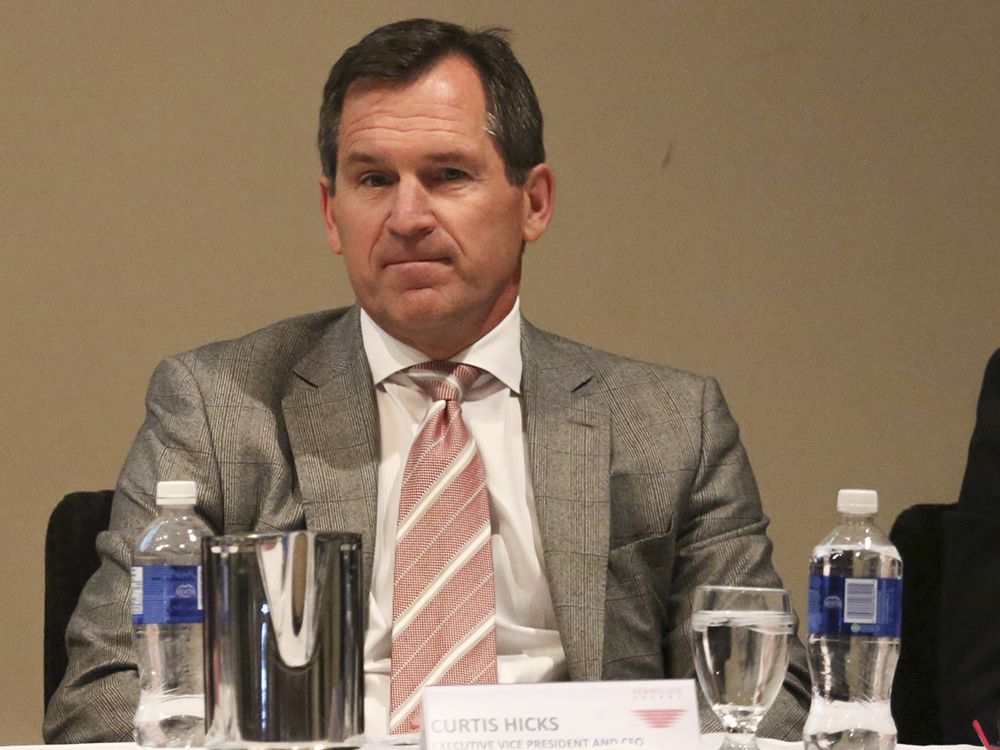
A couple of key questions loom for Canadian oil and gas producers as they pump out strong first-quarter results and crude prices crest above US$65 a barrel.
What will companies do with the additional cash flowing into their coffers and what steps will they take to curb greenhouse gas emissions as investors, governments and the public sharpen their focus on ESG issues?
Vermilion Energy, a mid-sized producer that operates around the world, answered both questions at its annual meeting this week.
The company may increase its capital budget later in the year, but has already decided to join a growing number of Calgary-based energy firms pledging to reach net-zero emissions by 2050.
It’s important that Vermilion, which operates in France, Germany, the United States and Canada, pursue the aspirational climate goal, said company president Curtis Hicks.
“In all the countries we operate, they have net-zero targets and we think it’s prudent for us to adopt it,” Hicks said in an interview Thursday.
“We have plans in place across the company that we believe will get us there, firm ideas of what we can do differently to reduce our emissions.”
To reach that commitment, Vermilion will set targets every five years, initially planning to reduce emissions from operations by 15 to 20 per cent by 2025.
On the financial front, Vermilion posted net earnings of $500 million during the first quarter. It isn’t committing to raising its capital budget just yet, even as benchmark U.S. oil prices closed Thursday above $65 a barrel.
However, some companies are beginning to move.
Baytex Energy CEO Ed LaFehr said Thursday the company will bump up its exploration and development spending this year to between $285 million and $315 million.
That’s about 20 per cent above the mid-range point of its capital program announced in December, “which was set in a $40 to $45 pricing environment,” LaFehr said during the company’s online annual general meeting.
He noted Baytex is increasing both its capital spending and production guidance — to about 78,000 boe per day — “as a result of operational momentum and the strength of the commodity prices.”
Vermilion remains focused on paying down debt, but may consider increasing its capital program in July or August for drilling activity in the fourth quarter.
“We certainly have the capacity and opportunity base within the company to invest more money, but we’re reluctant to commit . . . commodity prices can change pretty quickly,” Hicks said.
“If commodity prices continue to trade where they are at, then we will give serious consideration to increasing the capital program by up to $50 million — certainly no more than that at this stage because our priority is reducing debt.”
The twin themes of producers remaining vigilant on spending while embracing bolder emissions targets comes as the industry is enjoying a fragile recovery.
As companies face more scrutiny on ESG considerations, a number of Canadian energy companies have adopted net-zero emissions targets, including Canadian Natural Resources, Enbridge and Cenovus Energy.
Ottawa has set more aggressive goals for Canada, pledging last week to reduce the country’s emissions by 40 to 45 per cent by the end of this decade.
The question is how the industry will get there. The adoption of technology and increased investments in carbon capture utilization and storage (CCUS) developments will be necessary.
Related
During the first-quarter earnings call of Whitecap Resources on Thursday, CEO Grant Fagerheim spoke about the role that CCUS can play in capturing emissions in Canada.
The company operates two CCUS projects in Western Canada, sequestering about two million tonnes of CO2 annually, with the ability to expand and more than double that amount using existing infrastructure.
As for the possibility of spending more this year on its capital budget because of higher oil prices, Fagerheim noted the company will look at its options after Whitecap reduces its debt by a targeted $200 million.
“Right now, we will remain very disciplined,” he said.
While there are signs some companies will expand their budgets later in the year, many producers remain guarded after the financial damage caused by last year’s oil-price collapse and the effect of the COVID-19 pandemic.
Investors are also demanding producers remain disciplined and use any extra cash to bolster their balance sheet, buy back shares and increase dividends.
“Energy inventors around the globe want one thing and one thing only: they want a return on capital,” said Eric Nuttall, a senior portfolio manager with Ninepoint Partners.
On Thursday, the Petroleum Services Association of Canada increased its drilling forecast for the year by seven per cent, based on expectations of higher commodity prices.
The group expects 3,600 oil and gas wells will be completed across the country this year, up 250 from its projections in January.
PSAC interim president Elizabeth Aquin noted Canadian petroleum producers reinvested 140 per cent of their after-tax cash flow levels between 2011 and 2016.
That figure is expected to slip to just 35 per cent this year, according to estimates from ARC Energy Research Institute.
“There is going to be continued fiscal restraint,” Aquin said.
Despite that caution, some producers are developing plans to spend more money in the fourth quarter on wells that will pay out quickly, said Jeremy McCrea, an analyst with Raymond James.
“At these prices and how profitable these oil and gas companies are and how much money they are making, they’ve got a new lease on life here,” McCrea said.
“They’re rethinking the way of (running) their businesses — that includes ESG, the focus on profitability and keeping a clean balance sheet.”
Chris Varcoe is a Calgary Herald columnist.
You can read more of the news on source
